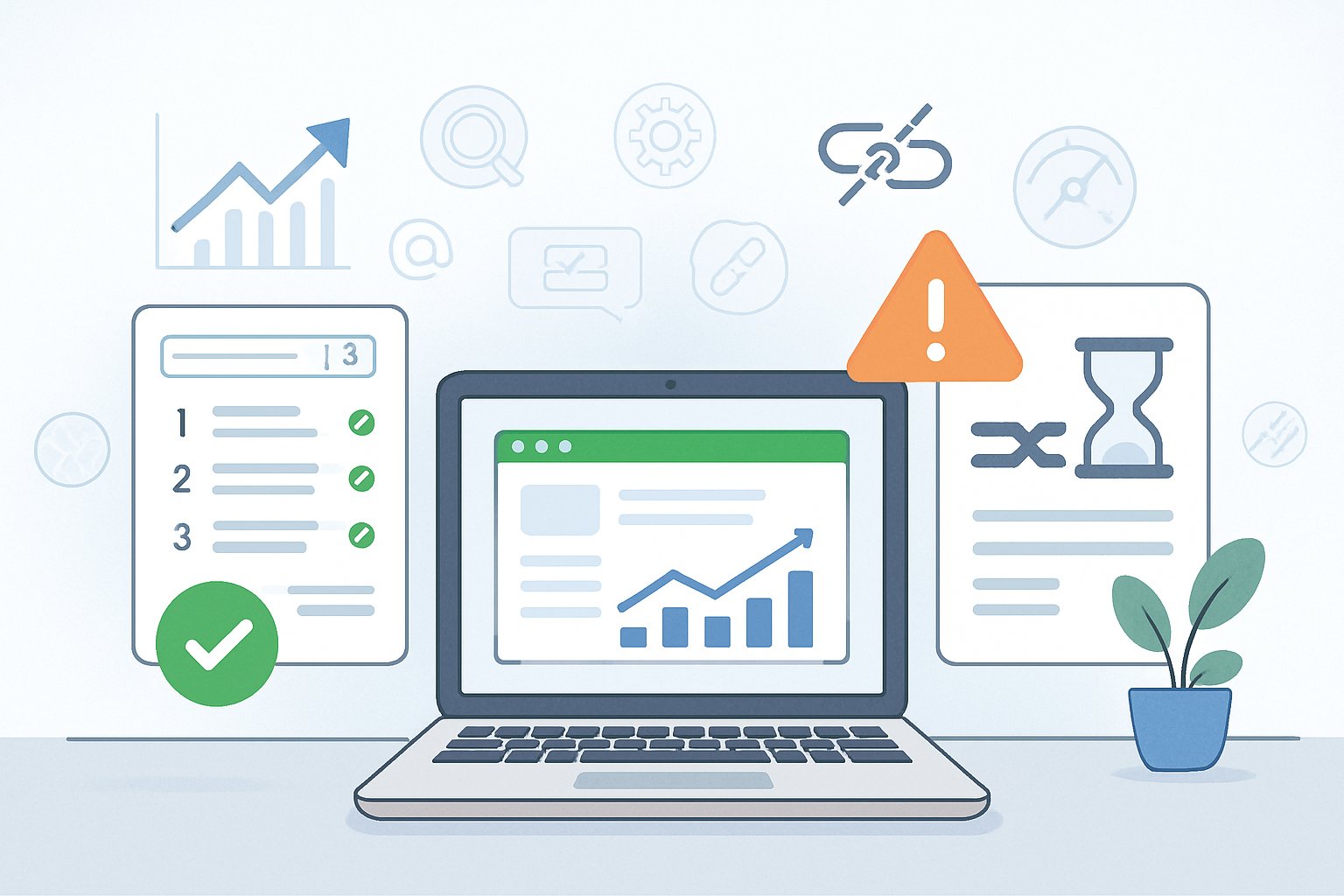When you’re launching an online store, getting found in search engines is a big deal. Shopify is a go-to platform for a lot of store owners, but people often wonder — is it actually good for SEO, or is it holding you back?
That’s a fair question. And the answer isn’t a simple yes or no.
TL;DR: Shopify is SEO-friendly out of the box — but it has limitations
- Built-in tools cover SEO basics: fast load times, mobile responsiveness, editable meta tags, SSL
- Shopify has some restrictions — especially around URL structure and technical customizations
- Most issues can be addressed with apps or expert help
- For Windsor-Essex businesses and most SMBs, Shopify is more than capable when managed well
Keep reading to dig into the full details, pros, cons, and best practices for optimizing your Shopify store.
Understanding Shopify’s SEO Capabilities
What Is Shopify SEO?
Shopify SEO refers to the ways Shopify helps your store get found online. That includes things like:
- Clean code for fast loading
- Mobile-friendly themes
- SSL encryption (HTTPS)
- Editable meta titles, descriptions, and URLs
Basically, the platform takes care of a lot of technical stuff, even if you’re not a developer.
Built-In SEO Features
Here are some solid SEO tools Shopify offers out of the box:
- Meta tag editing for products, pages, and blogs
- Automatic XML sitemap creation
- Structured, logical URLs (though not fully customizable)
- Mobile-ready themes
- CDN hosting for faster global delivery
- Easy 301 redirects
These features are enough for most small to mid-sized stores, but larger or more complex businesses may want additional flexibility.
Apps and SEO Tools
Shopify’s App Store has tons of SEO helpers like:
These can:
- Check for missing metadata
- Generate structured data (schema markup)
- Help you manage alt text
- Fix broken links
You can also connect your store with Google Search Console and Analytics for deeper insights.
Technical SEO Considerations
Sitemap Management
Shopify auto-generates your sitemap at /sitemap.xml, including product, collection, and blog pages.
You can’t customize the sitemap deeply — but for most users, it updates automatically when you add or delete content, which is all you really need.
Robots.txt Handling
Shopify manages your robots.txt file, which blocks admin and checkout pages. You can now add limited custom rules in the theme editor.
It’s helpful if you want to:
- Block certain bots
- Disallow specific URLs
Just be careful — changes here can accidentally hide your site from Google if done wrong.
301 Redirects and URL Structure
You can create 301 redirects easily, which is great for SEO when renaming or deleting pages.
That said, Shopify enforces certain URL structures like /products/ and /collections/, which can’t be removed. Not ideal, but not a dealbreaker either.
Canonical Tags and Duplicate Content
Shopify adds canonical tags automatically to avoid duplicate content issues, which are common in e-commerce (e.g., products listed in multiple collections).
This is a major plus for SEO and usually works well. Just watch out for apps that might override or conflict with canonicals.
On-Page SEO and Content Optimization
Meta Titles and Descriptions
Shopify gives you control over these for every page, product, and blog post. Best practices:
- Titles: under 60 characters, keyword-first, specific
- Descriptions: under 155 characters, clear and enticing
If you skip these, Google will pull random text — and that rarely looks good.
Unique Content and Structured Data
Avoid using manufacturer descriptions or duplicate copy. Instead:
- Write original product descriptions
- Include FAQ sections
- Add schema markup for products (price, availability, ratings)
You can do this via apps or custom code. Structured data can get your listings featured as rich snippets.
Product Pages and Ecommerce SEO
Optimizing Variants
Shopify uses JavaScript for some product variants, which can create crawl issues. Solutions:
- Add alt text for all images
- Use tables/lists for variant details
- Create separate landing pages for high-performing variants if needed (with canonical tags)
Landing Pages
Great for targeting local or niche search terms like “women’s boots Windsor.”
- Use original images and helpful copy
- Add customer reviews and shipping info
- Include internal links to collections and related products
Subcategories
You’ll build subcategories using collections. Each should have:
- Unique titles and meta descriptions
- Original intro content
- Clean navigation to parent/child categories
Avoid copy-pasting descriptions across collections.
Mobile Optimization and Speed
Mobile-Friendly Themes
Most Shopify themes are responsive, but still:
- Test them on multiple devices
- Adjust button sizes and image placement for touchscreens
- Preview on mobile before publishing
Site Speed
Shopify uses a CDN, but you still need to:
- Compress images
- Remove unnecessary apps or plugins
- Limit the use of large banners/videos
Core Web Vitals
To meet Google’s UX metrics:
- Optimize Largest Contentful Paint (LCP)
- Minimize Cumulative Layout Shift (CLS)
- Improve First Input Delay (FID)
Use PageSpeed Insights or Lighthouse to test and adjust.
Shopify Blogging Capabilities
Strengths and Weaknesses
Shopify blogging is basic but useful:
- Supports titles, images, alt text, and metadata
- Lacks advanced options like multiple authors or custom URLs
- URL paths include
/blogs/, which you can’t change
Using Blogs for SEO
Despite its limits, blogging on Shopify can help:
- Target long-tail keywords
- Build topical authority
- Drive traffic to product pages
You can use apps to improve blog layout, share buttons, and analytics.
Shopify SEO Limitations and Workarounds
Common Issues
- Limited control over URL structure
- Potential duplicate content
- Missed meta data opportunities
- Slower speeds due to too many apps
Fixes and Tools
- Use canonical tags
- Install SEO apps like Plug in SEO or SEO Manager
- Limit unnecessary apps
- Regularly audit and update your metadata
Monitoring and Improving Performance
Google Search Console
Track how your store shows up in Google:
- Keyword rankings
- Crawl errors
- Index coverage
- Mobile usability
You can also submit updated sitemaps or request indexing.
Google Analytics
Use GA to monitor:
- Organic search traffic
- Bounce rate
- Time on page
- Conversion rates
Segment your traffic to measure SEO impact more accurately.
Rankings Tracking
Monitor your keyword rankings over time:
- Use Search Console or a paid tool like Ahrefs/SEMrush
- Focus on converting keywords, not just vanity terms
- Track competitor rankings and SERP changes
Frequently Asked Questions
Does Shopify hurt SEO?
Not if you use it correctly. Shopify has some restrictions (like URL control), but it also makes SEO easier for non-developers.
Can Shopify sites rank high in search results?
Yes. With good content, backlinks, and technical optimization, Shopify stores can absolutely compete in organic search.
What are Shopify’s SEO weaknesses?
- Fixed URL structure
- Limited file access (robots.txt, sitemap.xml)
- Duplicate content issues
What are some easy SEO wins on Shopify?
- Write custom product descriptions
- Add alt text to every image
- Use SEO apps for structured data and metadata
- Keep navigation simple and mobile-friendly
Is Shopify good for local SEO in Windsor-Essex?
Yes, especially if you:
- Target local keywords
- Add your business to Google Business Profile
- Include Windsor-Essex info in content and metadata




